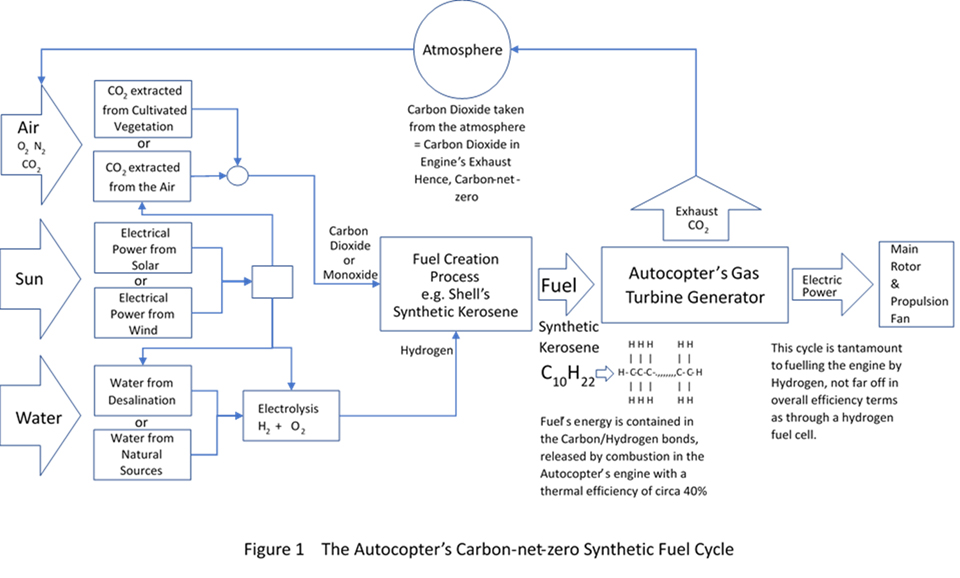Sustainability and the Arrival of Synthetic Fuels

The technology of creating synthetic kerosene in this way is well researched. Essentially, it’s called CO2 hydrogenation and the two crucial steps are a) how to break up the stable CO2 molecule, and b) how to form a C-C chain up to C10. The chemistry involved is very much to do with catalysation and the process used, e.g. Fischer-Tropsch. The Shell process actually involves production of a wax and the turning of this into synthetic kerosene.
The gas turbine engine proposed by Horizon Helicopters for the Autocopter is in fact a much simpler gas turbine generator, outputting circa 180kw of DC power at 800v. Its target weight is 45kg and 40% for its thermal efficiency. In essence, using Shell’s synthetic kerosene as the fuel, the engine can be said to run on hydrogen since the exact amount of CO2 used in the manufacture of the fuel is returned to the atmosphere after combustion has taken place. The Autocopter’s gas turbine then nearly equates to the efficiency of a hydrogen-fed fuel cell (at circa 50%).
As a final point, today it’s impossible to know with a battery-powered aircraft what CO2 has been created to fuel the aircraft. Why? Because, in the UK, the electricity supply companies take their power from an ever-changing mix of gas-fired, wind, solar and nuclear power sources. To even approach carbon-net-zero, the UK Government is going to have to increase wind power generation absolutely massively, backed up by some form of storage technology. Or else aim for a sensible, practical balance of electric power, synthetic fuel and hydrogen.
Back